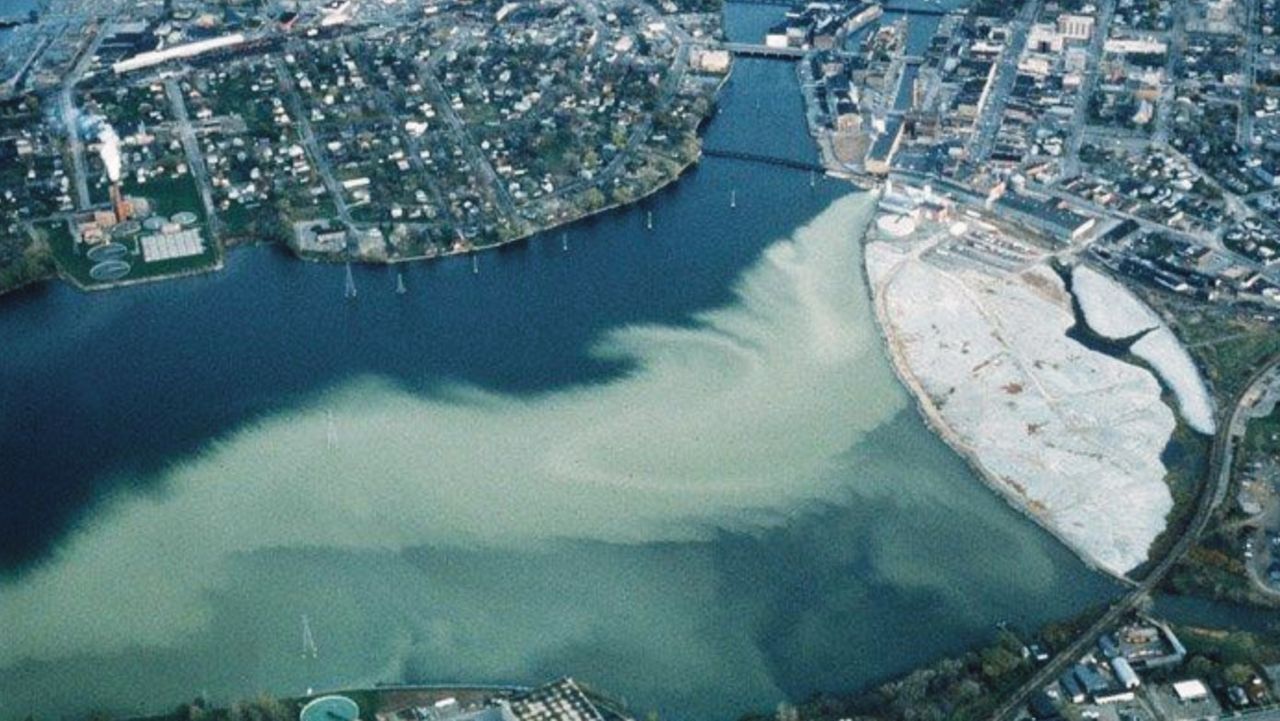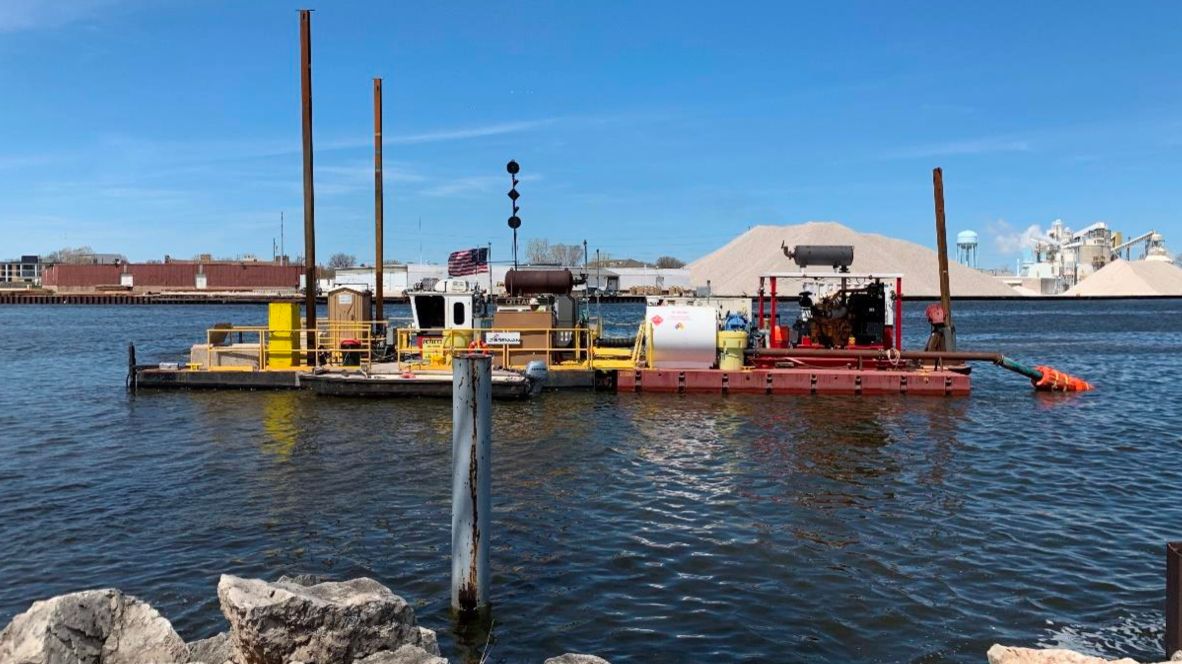GREEN BAY, Wis. — Standing on Green Bay’s CityDeck, overlooking the Fox River, authors David Allen and Susan Campbell marveled at how far the city and river have come since the 1990s.
“I love that the city is getting recognition. I love that the bay is getting cleaned up,” said Allen.
“I love that there are all these people walking up and down, boating, fishing, swimming. It’s wonderful. I feel very vindicated that all those things are happening,” said Allen.

Allen worked in the area for the U.S. Fish & Wildlife Service in the 1990s. At that time, the Fox River, the heart of many nearby communities, was polluted with PCBs, or polychlorinated biphenyls.
“Once it’s here, it lasts for decades and decades, and it only takes a tiny amount to cause problems,” said Allen.
The PCBs were put into the river by local paper companies. Attempting to raise awareness of the problem, Allen and others worked with local reporters, including Campbell.
PCBs bind to soil and sediment, affecting fish and animals.
“Birds with backward wings and twisted bills and missing eyes. They’d seen baby chicks wasting away and never reaching maturity,” said Campbell, who worked for the Green Bay Press-Gazette as an environmental reporter.

Thirty years ago, science was emerging on the impact of PCBs on humans. Allen had an insider’s perspective on the battle between paper companies, state and federal agencies over what should be done.
“That fight is what made it a big story, and we used that fight to keep the spotlight on the work we were doing,” said Allen.
Allen relied on reporters, such as Campbell, to convey the facts to the public.
“I devoted the better part of the ’90s covering this story. It was all-encompassing. It took all my energy. It was a big story,” said Campbell.

Ultimately, the paper companies paid for a $1.3 billion cleanup of the river. About 6.5 million cubic yards of contaminated sediment were removed.
“Enough to fill Lambeau Field six times all the way to the top of the stadium,” said Allen.
Generally considered a success, the cleanup allowed wildlife on the river to bounce back.
The two moved on with their lives and hadn’t seen each other for fifteen years until one of Allen’s former colleagues called him.
“They said, ‘there’s a crisis. Everyone’s forgotten that there’s even a conflict at this place. Someone’s got to find a way to write that down before it’s forgotten,’” said Allen.
Though the Fox River was largely in her past, Campbell wasn’t completely caught off guard.
“I had a number of people tell me, ‘hang onto your notes. This will be a book someday,’” said Campbell.
Campbell began the book process as an editor for Allen’s 2,000 pages of notes until an agent suggested they insert themselves as characters and tell a more personal story.
“She said write it as you would an hour and a half movie,” said Campbell.

It seemed to work. One review called it on par with “Erin Brockovich” and “A Civil Action.”
But there are no movie plans in the works. The two seem content watching others enjoy the river they worked so hard to protect.
Campbell said their tale proved that local reporting matters and, though ugly sometimes, there are environmental success stories.
“Even though it can take, in this case, the better part of 50 years or more, from start to finish, when they first started finding the problems, you can have a good result,” said Campbell.
“Paper Valley: The Fight for the Fox River Cleanup” came out in April.



